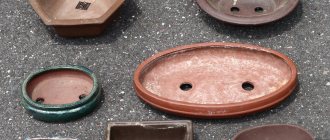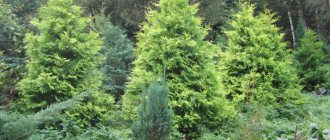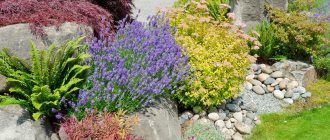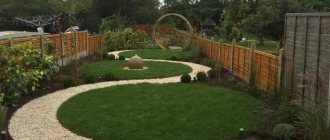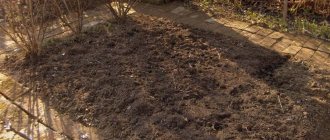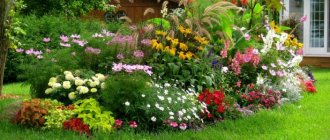Hedge
A hedge is a fence created from various green spaces. A living fence at the dacha, dense enough, of the required height, width, beauty, can be grown in two to three years. It does not need any painting or repairs; it is enough to trim it a couple of times a season. And the fence is cheaper than a metal or concrete fence.
The good thing about a living fence is that there is room to expand and create what your heart desires; you can combine plants with, for example, wooden, metal, brick and other structures. The hedge can be created either very dense or more openwork.
Photos of a living fence that can be created on your site are presented in our article.
Creating a hedge fence is a fun, useful, and interesting activity. Such natural fencing will last for many years with proper care. It’s pleasant to relax next to him, you can breathe easily, your mood improves.
Plants not recommended for hedges
Juniper hedge
Plants with poor health are not recommended for hedges . If they are attacked by harmful insects, it will be very difficult to save the bushes. This can lead to the death of the entire plant.
In temperate climates, there is no need to plant non-winter-hardy plant varieties. In harsh winter conditions it is very difficult to cover them and save them from freezing.
When using bushes with running roots, you need to install a barrier . Otherwise, they will grow throughout the entire area and spread to the neighbors. It is very difficult to get rid of them. The appearance of the fence will not be aesthetically pleasing.
Hedge - types
Living fences vary in height and plant composition. He can:
- free to grow or be trimmed;
- be located in one row, several rows;
- consist of one type of plant or of different ones;
- be solid or translucent, etc.
A high fence - usually higher than 2.5 meters, is located along the outer border of the site.
Medium - from 1 to 2 m, divides the site into different zones, and is also used along its outer border.
Border - a fence up to 1 m high for different areas on the site: flower beds, lawns, paths, playgrounds.
Fences vary in shape:
- growing naturally and formed. Growing as in nature - do not require any special adjustments, grow naturally;
- formed – regular pruning is required; plants are given a certain geometric shape.
Zoning the site
Is it possible to divide the territory of a personal plot into zones using plants? It is very important to correctly do landscape zoning on the site.
In order to divide it into several zones, you can use small shrubs, the height of which will not exceed two meters. Shrubs of one or more types are suitable for an internal fence.
If you want the bushes to bring not only aesthetic pleasure, you can plant fruits and berries - currants, hawthorn or barberry. Such shrubs will generously provide their owners with delicious fruits.
Boxwood: planting, care, growing in open ground, propagation. Full description of the plant from A to Z. More than 100 photos of evergreen shrubs- Trimming bushes - the basics of choosing the right plants and forming the right shapes, selecting tools (photo + video)
Landscaping a site - basic principles and rules for creating a beautiful site with your own hands
Deciduous trees and shrubs
Deciduous are deciduous and evergreen, and are used to create hedges of different heights.
Tall (usually trees: linden, maple, hornbeam, poplar tolerate pruning well and are resistant to the adverse effects of car exhaust, dust, etc.). Excellent for the background of a hedge.
Medium-sized ones are a living fence made of shrubs (willow, rose hip, hawthorn, barberry, mahonia holly, privet, aronia cotoneaster, red and black elderberry, tree hydrangea, spirea, viburnum, brilliant cotoneaster, lilac, forsythia, Japanese quince, and also - boxwood).
Boxwood is evergreen and tolerates pruning well. In winter, it is better to cover it with agrospan or sprinkle it with snow to protect the foliage from winter sunburn.
Border plants for the fence: boxwood barberry, boxwood, Fortune euonymus, caragana, shiny honeysuckle, golden currant, heather, low or steppe almond, bush and cinquefoil, gorse, alpine currant. These shrubs can become the second or third tier in a hedge.
Plants for the border must meet several conditions:
- limited growth
- crown density
- unpretentiousness
- good haircut tolerance
- decorativeness
Borders made of low-growing shrubs can successfully frame paths in the garden, lawn, playground and other areas of the site.
Choosing plants for the fence
- plants must be adapted and take root well in a given climate zone
- shade- or light-loving (depending on where they will be planted)
- tolerance of haircut or loose fits
- conifers saturate the air with beneficial phytoncides
- you can alternate conifers with deciduous ones
- Planting an evergreen hedge is best done in April
- plants can serve not only as a hedge, but also as a source of healthy and tasty berries.
Living fence in the country - what to tackle first?
First of all, it is important to determine the boundaries of the site and the zones inside, consider whether the living fences will be permanent or temporary and, most importantly, what they will cover or delimit.
Then it will become clear for which zone, for what purpose certain plants will be needed, where they will need pruning, and where they can grow freely.
Which plants to choose?
It is best to purchase those that are adapted to the given climatic conditions.
Low-growing and border plants can be successfully grown from cuttings; the rest are best purchased young, no older than 6 years. The roots of the plants should be fresh, not dry, healthy, and the crown should be comprehensively developed.
Selecting Suitable Plants
An important condition in choosing plants is their root system. Running roots are not suitable for hedges. For example, like raspberries and blackberries. Their task is to fence off the site or zone it, but not to spread to neighboring territories.
Fast-growing plants are a great way to create a green fence in a short time
If you plant bushes with thorns along the perimeter, it will serve as protection from uninvited guests. When selecting shrubs, you must take into account soil characteristics and climatic conditions. This will make caring for them easier.
How to make a living fence
- we determine the support for a hedge of climbing plants
- we mark trenches for planting of the required width (taking into account the number of rows in the fence)
- we prepare holes for seedlings, if there are several rows - in a checkerboard pattern
- don't forget to drain
- maintain the proportions of the distance between plants
- Pebbles of different colors and decorative sand can be used as mulch - they will protect tender young plants from drying out the soil and, moreover, they look very beautiful
Location
A striking red leaf hedge will do well in a clean, open space exposed to sunlight.
A spectacular hedge on your property
In a dark place, such bright foliage will look gloomy. This applies, for example, to some varieties of European beech or cultivated cherry plum. Plants with golden needles will appear dull on hot days. To avoid unexpected effects, it is better to choose species with bright green leaves.
It is customary to use not only planting shrubs
- Due to their bright foliage, maples will decorate your site in the autumn. Among the Far Eastern species, it is worth noting the Manchurian ash, fluffy alder, and beautiful larch.
- Some hedges have thorns and thorns. On the one hand, this scares off some uninvited guests, on the other hand, it creates difficulties in regular maintenance.
- Don't ignore climbing plants either. They grow quickly in both sunny and shady corners of the garden. They entwine trellises, obelisks and pavilions specially built for them.
- Campsis with bright trusses of tubular flowers has proven itself well in landscaping. Pruned oaks, maples, and weeping lindens look great on the plots.
Such shrubs will add a good mood to your dacha
You have the power to turn your hedge into a sea of colors and flowers. You can buy ready-made wooden trellises covered with plants. In just one day, reliable protection from prying eyes will be ready.
Soil and hedge care
Watering should be moderate, but not excessive - excess moisture should not be allowed, as well as drying out of the soil.
Timely fertilizing, mulching, and regular loosening will ensure that the hedge is in excellent condition, and the plants will be beautiful and healthy.
The optimal planting time is the middle and second half of September, so that the plants have time to take root well before winter.
Pruning should be carried out regularly - in early spring, mid-summer, mid-autumn.
You can build a hedge only if you are willing to constantly monitor the condition of the plants, water them regularly and on time, feed them, and trim them.
In general, making a living fence is not difficult and inexpensive. However, you need to carefully consider whether there is enough time, energy and desire to maintain the fence in the right condition so that it pleases the eye and truly serves as a beautiful and durable fence.
Care, haircut
To make a hedge as beautiful and presentable as possible, it needs constant care - timely watering, trimming, removing dried parts, controlling pests and diseases. The desired shape is given when the plants in it are still young. Pruning is done in winter for the first time, and at the end of summer for the second time. Conifers are pruned in late autumn, early spring.
During shearing, shoot growth increases and the crown becomes thicker. The hedge is cut depending on the growth rate of its components, from one to four times a year. Each new pruning is done as close as possible to the previous one - this way, a high density of the bush is achieved, which does not sag over time, and does not deform during heavy snowfalls.
An excessively neglected hedge is trimmed first on one side, and after a year on the other. At the same time, it is fertilized, watered, and mulched. All types of pruning are done according to templates; tall ones are cut while standing on a bench or ladder.
The modern chemical industry offers a number of drugs applied after pruning that suppress the growth of new young shoots.

